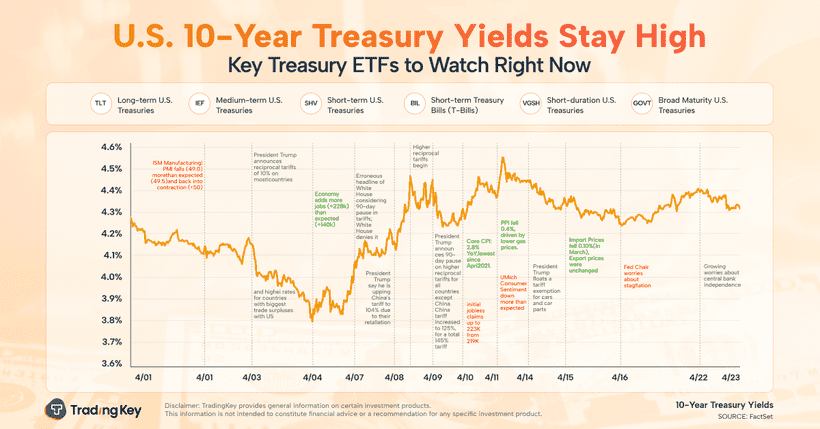Nonfarm Payrolls expected to show modest hiring rebound in August after July’s tepid report


- US Nonfarm Payrolls are forecast to rise 160K in August after gaining merely by 114K in July.
- The United States Bureau of Labor Statistics will release the critical jobs report on Friday at 12:30 GMT.
- The employment data could help gauge the size of the Fed interest-rate cut in September, rocking the US Dollar.
The United States Bureau of Labor Statistics (BLS) will publish August's highly anticipated Nonfarm Payrolls (NFP) data on Friday at 12:30 GMT.
The US labor market data hold the key for markets to gauge the size of the expected interest-rate cut by the US Federal Reserve (Fed) in September, ramping up the volatility around the US Dollar (USD).
What to expect in the next Nonfarm Payrolls report?
The Nonfarm Payrolls report is forecast to show that the US economy added 160,000 jobs in August, after creating 114,000 in July.
The Unemployment Rate is likely to dip to 4.2% in the same period from July’s 4.3% reading. Meanwhile, a closely-watched measure of wage inflation, Average Hourly Earnings, is seen increasing by 3.7% in the year through August after rising 3.6% in July.
The August employment data will offer significant insights into the strength of the US labor market, which are critical to shaping the Fed interest-rate outlook at the September 17-18 policy meeting and beyond.
Fed Chairman Jerome Powell indicated during his opening remarks at the Jackson Hole Symposium last month that an "unwelcome further cooling in the labor market" could warrant more aggressive policy action, fanning a 50 basis point (bps) interest rate cut.
Meanwhile, the Fed tweaked its July policy statement to mention that it is "attentive to the risks to both sides of its dual mandate", rather than previously only noting its attention to inflation risks.
Previewing the August employment situation report, TD Securities analysts said: “We expect US payrolls to rebound just north of the 200k mark in August following July's downside surprise. The UE rate likely retraced a tenth to 4.2% with wages rising a firmer 0.3% MoM.”
How will US August Nonfarm Payrolls affect EUR/USD?
The US Dollar (USD) has resumed its downward momentum against its major rivals, sending the EUR/USD pair back toward the 1.1100 threshold. Will the US NFP report double down on the dovish Fed expectations, perking up EUR/USD at the expense of the USD?
In the lead-up to the US NFP showdown, weak Institute for Supply Management (ISM) Purchasing Managers Index (PMI) data raised concerns over a potential ‘hard landing’ for the US economy amid fresh signs of loosening labor market conditions.
The ISM announced on Tuesday that its headline US Manufacturing Index improved slightly to 47.2 in August from July’s 46.8 but remained in contraction while below the estimated 47.5 print. Data on Wednesday showed that US Job Openings dropped to a 3-1/2-year low in July, arriving at 7.67 million, following the 7.91 million openings in June while below the expected 8.1 million. The Automatic Data Processing (ADP) reported on Thursday that the US private sector employment increased by 99,000 jobs in August after rising by a downwardly revised 111,000 in July.
Discouraging US economic data ramped up bets for a 50 bps interest-rate cut by the Fed at its September meeting. Markets are now pricing in a 47% chance of an outsized 50 bps rate cut by the Fed later this month, up from 31% at the start of this week, according to the CME Group’s FedWatch tool.
If the headline NFP figure surprises with payroll growth below 100,000, it could bolster the odds of a big cut in September, exacerbating the US Dollar’s pain while pushing EUR/USD further north. Conversely, a strong NFP print combined with hot wage inflation data would pour cold water on aggressive Fed rate cut prospects for this month, boosting hopes that the Fed may opt for a more modest 25 bps rate reduction. This could fuel a decent US Dollar comeback, reinforcing fresh EUR/USD selling back toward 1.0900.
Dhwani Mehta, Analyst at FXStreet, offers a brief technical outlook for EUR/USD:
“The EUR/USD pair defends the 21-day Simple Moving Average (SMA) at 1.1061, having recaptured it on Wednesday. The 14-day Relative Strength Index (RSI) points north well above the 50 level, currently near 58, suggesting that buyers are likely to remain in charge in the near future.”
“Buyers need to crack the year-to-date high of 1.1202 recorded last month to take on the 1.1250 psychological barrier. Further up, the July 18, 2023, high of 1.1276 will challenge the bearish commitments. Alternatively, acceptance below the 21-day SMA at 1.1061 is critical for a sustained correction. The next healthy support levels are seen at the 1.1000 round figure and the 50-day SMA at 1.0939,” Dhwani adds.
Economic Indicator
Nonfarm Payrolls
The Nonfarm Payrolls release presents the number of new jobs created in the US during the previous month in all non-agricultural businesses; it is released by the US Bureau of Labor Statistics (BLS). The monthly changes in payrolls can be extremely volatile. The number is also subject to strong reviews, which can also trigger volatility in the Forex board. Generally speaking, a high reading is seen as bullish for the US Dollar (USD), while a low reading is seen as bearish, although previous months' reviews and the Unemployment Rate are as relevant as the headline figure. The market's reaction, therefore, depends on how the market assesses all the data contained in the BLS report as a whole.
Read more.
Next release: Fri Sep 06, 2024 12:30
Frequency: Monthly
Consensus: 160K
Previous: 114K
Source: US Bureau of Labor Statistics
Why it matters to traders?
America’s monthly jobs report is considered the most important economic indicator for forex traders. Released on the first Friday following the reported month, the change in the number of positions is closely correlated with the overall performance of the economy and is monitored by policymakers. Full employment is one of the Federal Reserve’s mandates and it considers developments in the labor market when setting its policies, thus impacting currencies. Despite several leading indicators shaping estimates, Nonfarm Payrolls tend to surprise markets and trigger substantial volatility. Actual figures beating the consensus tend to be USD bullish.
Nonfarm Payrolls FAQs
What are Nonfarm Payrolls?
Nonfarm Payrolls (NFP) are part of the US Bureau of Labor Statistics monthly jobs report. The Nonfarm Payrolls component specifically measures the change in the number of people employed in the US during the previous month, excluding the farming industry.
How does Nonfarm Payrolls influence the Federal Reserve monetary policy decisions?
The Nonfarm Payrolls figure can influence the decisions of the Federal Reserve by providing a measure of how successfully the Fed is meeting its mandate of fostering full employment and 2% inflation. A relatively high NFP figure means more people are in employment, earning more money and therefore probably spending more. A relatively low Nonfarm Payrolls’ result, on the either hand, could mean people are struggling to find work. The Fed will typically raise interest rates to combat high inflation triggered by low unemployment, and lower them to stimulate a stagnant labor market.
How does Nonfarm Payrolls affect the US Dollar?
Nonfarm Payrolls generally have a positive correlation with the US Dollar. This means when payrolls’ figures come out higher-than-expected the USD tends to rally and vice versa when they are lower. NFPs influence the US Dollar by virtue of their impact on inflation, monetary policy expectations and interest rates. A higher NFP usually means the Federal Reserve will be more tight in its monetary policy, supporting the USD.
How does Nonfarm Payrolls affect Gold?
Nonfarm Payrolls are generally negatively-correlated with the price of Gold. This means a higher-than-expected payrolls’ figure will have a depressing effect on the Gold price and vice versa. Higher NFP generally has a positive effect on the value of the USD, and like most major commodities Gold is priced in US Dollars. If the USD gains in value, therefore, it requires less Dollars to buy an ounce of Gold. Also, higher interest rates (typically helped higher NFPs) also lessen the attractiveness of Gold as an investment compared to staying in cash, where the money will at least earn interest.
Sometimes Nonfarm Payrolls trigger an opposite reaction than what the market expects. Why is that?
Nonfarm Payrolls is only one component within a bigger jobs report and it can be overshadowed by the other components. At times, when NFP come out higher-than-forecast, but the Average Weekly Earnings is lower than expected, the market has ignored the potentially inflationary effect of the headline result and interpreted the fall in earnings as deflationary. The Participation Rate and the Average Weekly Hours components can also influence the market reaction, but only in seldom events like the “Great Resignation” or the Global Financial Crisis.






